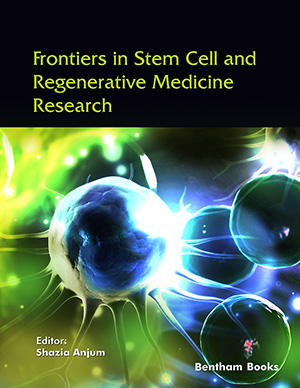
Abstract
Evaluation of patients with pectus excavatum has primarily been focused on, especially the pediatric population who undergoes surgical correction of sternal defects mainly for cosmetic reasons combined with exercise-limiting symptoms. The extent of cardiopulmonary improvement in this population based on cardiac imaging, pulmonary function testing, and cardiopulmonary exercise testing may be highly variable. There is no current consensus on the limitations of cardiopulmonary impairment or potential improvement from surgical repair in pediatric patients. Limited data have been published in the medical literature on the evaluation of adults with pectus excavatum who may also present with a variety of clinical symptoms. Adult patients with exercise limitation and pectus excavatum may present with exertional dyspnea, chest discomfort, palpitations/tachycardia, exercise-induced wheezing, and use of bronchodilators for asthma-like symptoms. While numerous published review articles outline clinical evaluation and surgical treatment for younger patients, comprehensive evaluation for these adult patients has not been fully elucidated. There is no current consensus on the underlying cause of cardiopulmonary impairment in adult patients or their potential improvement from surgical repair. This review focuses on the recommended evaluation of adult patients to discern the potential cardiopulmonary limitations to exercise due to pectus excavatum, especially in physically fit adults, such as active-duty military personnel. Two illustrative cases are presented to describe the complexity of the evaluation for adult patients and the potential need for surgical correction.
Keywords: Clinical evaluation, exertional dyspnea, adult, pectus excavatum, patients, MVV.
[http://dx.doi.org/10.1016/j.yapd.2008.07.012] [PMID: 19048741]
[http://dx.doi.org/10.1016/S0022-3468(70)80004-5] [PMID: 5502888]
[PMID: 10803331]
[http://dx.doi.org/10.1097/00000658-200209000-00007] [PMID: 12192317]
[PMID: 6059202]
[PMID: 24453537]
[http://dx.doi.org/10.1016/S1010-7940(97)00326-6] [PMID: 9628377]
[http://dx.doi.org/10.1016/S0022-3476(00)70096-5] [PMID: 10657820]
[http://dx.doi.org/10.1016/j.jamcollsurg.2007.03.027] [PMID: 17660066]
[http://dx.doi.org/10.1016/j.jamcollsurg.2013.06.019] [PMID: 24246622]
[http://dx.doi.org/10.1055/s-0038-1668130] [PMID: 30103240]
[PMID: 25464892]
[http://dx.doi.org/10.1016/j.jpedsurg.2011.09.009] [PMID: 22152863]
[http://dx.doi.org/10.1016/j.ejcts.2006.07.004] [PMID: 16901712]
[http://dx.doi.org/10.1378/chest.105.6.1646] [PMID: 8205855]
[http://dx.doi.org/10.1016/S0022-5223(94)70414-7] [PMID: 8196380]
[http://dx.doi.org/10.1016/j.jpedsurg.2004.09.040] [PMID: 15868581]
[http://dx.doi.org/10.1007/s12098-010-0155-5] [PMID: 20814837]
[http://dx.doi.org/10.1080/00325481.2016.1205454] [PMID: 27352619]
[http://dx.doi.org/10.1378/chest.95.4.850] [PMID: 2924614]
[http://dx.doi.org/10.1002/ppul.20062] [PMID: 15334513]
[http://dx.doi.org/10.1007/s00268-008-9793-4] [PMID: 19002739]
[http://dx.doi.org/10.1007/s00383-008-2135-7] [PMID: 18357458]
[http://dx.doi.org/10.1097/00003072-199211000-00008] [PMID: 1424376]
[http://dx.doi.org/10.1148/radiology.156.3.4023243] [PMID: 4023243]
[http://dx.doi.org/10.1097/01.rlu.0000186854.41771.8f] [PMID: 16319631]
[PMID: 23619591]
[http://dx.doi.org/10.1007/s00383-006-1861-y] [PMID: 17252283]
[http://dx.doi.org/10.1016/S0022-5223(19)38626-X] [PMID: 4021526]
[http://dx.doi.org/10.1093/ehjci/jer284] [PMID: 22298154]
[http://dx.doi.org/10.1016/j.athoracsur.2016.03.105] [PMID: 27283111]
[http://dx.doi.org/10.1016/S0022-5223(19)42349-0] [PMID: 5451734]
[http://dx.doi.org/10.1016/S0022-3468(89)80530-5] [PMID: 2769541]
[http://dx.doi.org/10.1378/chest.124.3.870] [PMID: 12970011]
[http://dx.doi.org/10.1016/j.ejcts.2011.03.045] [PMID: 21570313]
[http://dx.doi.org/10.1016/S0022-3468(84)80268-7] [PMID: 6481587]
[http://dx.doi.org/10.1055/s-0039-1683384] [PMID: 30861534]
[http://dx.doi.org/10.1016/S0022-5223(19)35630-2] [PMID: 2294364]
[http://dx.doi.org/10.1183/09031936.06.00096005] [PMID: 16816351]
[http://dx.doi.org/10.1016/S0022-3476(80)80731-1] [PMID: 7359268]
[http://dx.doi.org/10.1007/s00383-010-2709-z] [PMID: 21113603]
[http://dx.doi.org/10.1016/j.athoracsur.2005.03.070] [PMID: 16122489]
 28
28 1
1



























